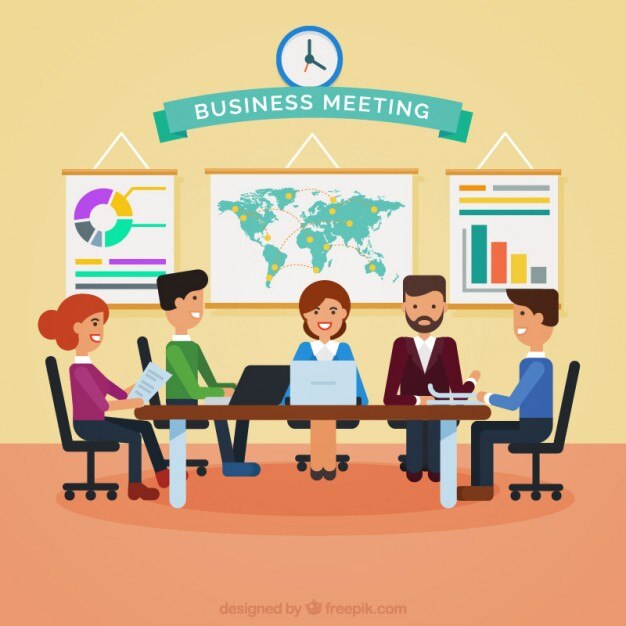Overcoming Employee Challenges in Small and Medium Enterprises: A Guide
Introduction:
Navigating the landscape of small and medium enterprises (SMEs) comes with its own set of challenges, especially when it comes to managing employees. In this comprehensive guide, we delve into the various hurdles faced by SMEs regarding their workforce and provide actionable insights to overcome them.
Understanding the Landscape of Employee Challenges in SMEs
In the realm of small and medium enterprises, employee challenges pose significant hurdles to growth and sustainability. From recruitment and retention to fostering a conducive work environment, SMEs encounter a myriad of complexities in managing their workforce effectively.
Recruitment Woes: Finding the Right Talent Amidst Competition
Recruiting suitable candidates for specialized roles within SMEs can be daunting, particularly in industries with fierce competition for skilled labor. Despite offering unique opportunities for growth and innovation, SMEs often struggle to attract top-tier talent due to limited resources and brand recognition.
Navigating Diversity and Inclusion: Fostering a Culture of Belonging
In today’s multicultural workplace, SMEs must embrace diversity and inclusion to thrive. However, managing diverse teams comes with its own set of challenges, including communication barriers, conflicting viewpoints, and cultural sensitivities. Overcoming these hurdles requires a concerted effort to foster a culture of belonging where every employee feels valued and respected.
Empowering Employees Through Continuous Learning and Development
Investing in employee training and development is crucial for SMEs looking to stay competitive in today’s rapidly evolving business landscape. By providing opportunities for skill enhancement and career advancement, SMEs can empower their workforce to reach their full potential and drive organizational success.
Balancing Workload and Burnout: Prioritizing Employee Well-being
In the fast-paced environment of SMEs, employees often face excessive workloads and looming deadlines, leading to burnout and diminished productivity. Finding the right balance between work and personal life is essential for maintaining employee well-being and preventing burnout. Implementing flexible work arrangements, promoting work-life balance, and fostering a supportive work culture are key strategies for mitigating burnout in SMEs.
Addressing Communication Challenges: Bridging the Gap
Effective communication is the cornerstone of success in SMEs, yet many organizations struggle to foster open and transparent communication channels. From miscommunication to lack of feedback, communication breakdowns can hinder productivity and breed mistrust among team members. By prioritizing clear and concise communication, SMEs can enhance collaboration, streamline processes, and foster a culture of transparency.
Navigating Regulatory Compliance: Ensuring Legal and Ethical Practices
Complying with regulatory requirements and industry standards is essential for SMEs to avoid legal pitfalls and safeguard their reputation. However, navigating complex regulations can be overwhelming, especially for businesses with limited resources and expertise. Seeking guidance from legal professionals and implementing robust compliance measures are critical steps for SMEs to ensure adherence to laws and regulations.
Strategies for Retaining Top Talent: Building a Strong Employer Brand
In the competitive landscape of SMEs, retaining top talent is paramount for sustained growth and success. Building a strong employer brand and cultivating a positive workplace culture are key drivers of employee retention. Offering competitive salaries, opportunities for advancement, and a supportive work environment can help SMEs attract and retain top performers in their industry.
Embracing Innovation and Adaptability: Thriving in a Dynamic Environment
In today’s ever-changing business landscape, SMEs must embrace innovation and adaptability to stay ahead of the curve. By fostering a culture of creativity and experimentation, SMEs can drive innovation, seize new opportunities, and navigate market disruptions with agility and resilience.
Leveraging Technology for Efficiency and Productivity
Technology plays a pivotal role in enhancing efficiency and productivity in SMEs, enabling them to streamline operations, automate repetitive tasks, and leverage data-driven insights for informed decision-making. By embracing digital transformation initiatives, SMEs can optimize their processes, improve resource allocation, and gain a competitive edge in the market.
Building Resilience in Times of Crisis: Overcoming Adversity
In the face of unforeseen challenges such as economic downturns or global pandemics, SMEs must demonstrate resilience and adaptability to survive and thrive. Developing contingency plans, diversifying revenue streams, and fostering a culture of resilience are essential strategies for SMEs to weather the storm and emerge stronger from adversity.
Conclusion
In conclusion, overcoming employee challenges in small and medium enterprises requires a multifaceted approach that encompasses recruitment, diversity and inclusion, employee empowerment, communication, compliance, talent retention, innovation, technology adoption, and resilience. By addressing these challenges proactively and implementing effective strategies, SMEs can create a supportive and thriving work environment conducive to long-term success.

FAQs
How can SMEs attract top talent in competitive industries?
SMEs can attract top talent in competitive industries by showcasing their unique value proposition, offering competitive salaries and benefits, providing opportunities for growth and advancement, fostering a positive work culture, and highlighting their commitment to innovation and creativity.
What steps can SMEs take to foster diversity and inclusion in the workplace?
To foster diversity and inclusion in the workplace, SMEs can implement policies and practices that promote equal opportunities, create a culture of respect and acceptance, provide diversity training for employees, actively recruit from diverse talent pools, establish employee resource groups, and ensure leadership commitment to diversity initiatives.
How does employee training and development contribute to organizational success?
Employee training and development contribute to organizational success by enhancing employee skills and competencies, increasing productivity and efficiency, fostering innovation and creativity, boosting employee morale and engagement, improving employee retention, and ultimately driving business growth and profitability.
What are some effective strategies for preventing burnout among employees?
Effective strategies for preventing burnout among employees include promoting work-life balance, encouraging open communication and feedback, providing opportunities for relaxation and rejuvenation, offering flexible work arrangements, recognizing and rewarding employee efforts, and fostering a supportive and collaborative work environment.
How can SMEs improve communication and collaboration among team members?
SMEs can improve communication and collaboration among team members by establishing clear communication channels, setting expectations for timely and transparent communication, encouraging active listening and feedback, fostering a culture of collaboration and teamwork, utilizing collaboration tools and technology, and promoting cross-functional collaboration.
What legal considerations should SMEs keep in mind to ensure compliance?
SMEs should keep several legal considerations in mind to ensure compliance, including understanding and adhering to relevant labor laws, ensuring workplace health and safety regulations are met, protecting intellectual property rights, complying with data privacy and security regulations, adhering to tax laws and regulations, and staying updated on changes in regulatory requirements that may impact their business operations.




